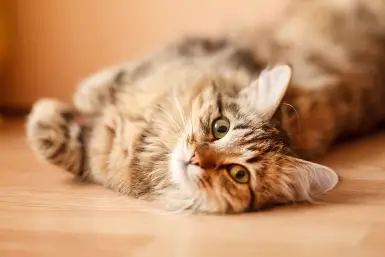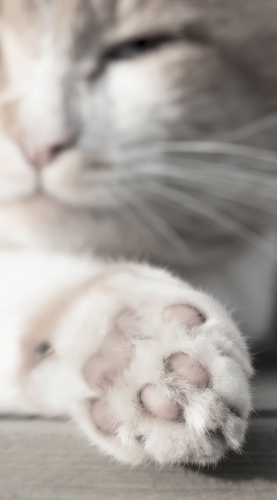
Browse Categories
- Dog Boot Camps
- Test
- Test
- Dogs Please Clicker Training
- Pet Insurance Comparison
- Exercising Pets With An E Scooter
- 10 Reasons Why Guinea Pigs Are Wholesome Little Pets
- Why You Should Use a Shed to House Your Pet
- How can Dog Owners Keep their Carpets Clean?
- How to Keep Your House in Order With Large Pets
- What is the Best Way to Feed a Puppy to Keep Them Healthy
- Pets Please
- All Animals and Pets
- Dogs and Puppies
- Cats and Kittens
- Birds
- Fish
- Reptiles
- All Other Small Pets
- Claws 'N' Paws Events
- PetsInLimbo/Greys4PetsInc.
News Search
PetsPlease News and Advice
What Causes Bleeding Paws In Your Cat?

Have you ever heard of bleeding paws in cats? Although the cat can injure their paws in some way to cause this, there are also some more complicated reasons for bleeding paws.
Most times, cats will lick or nip at the paw that is irritated, calling your attention to it. He could also be limping or not want to walk around at all. You need to look at your cat`s paws to see if the pads are pink and enlarged, bloody, wet from licking or has lesions, pustules and/or bumps. If you see any of these signs, you should let your vet take a look at your cat because it could be a more serious condition.
Because cats are curious creatures, they hurt their paws by fighting, insect bites or stings. This now open wound or even an embedded item is prone to contamination and infection, especially if the cat uses a litter box. You can discuss with your vet on how to keep your cat`s paws clean.
There is one disorder called Pemphigus and this immune system disorder is common in cats. It causes bumps on their paws and then this turns into pustules, then scabs. the paw pads may become thick and break. You must have a skin biopsy done to confirm Pemphigus is the cause as it has been mistaken for Feline Lupus. It can be treated with oral prednisone and you may have to wash and soak your cat`s feet until they heal up.
Another condition, called Pillow Foot or Plasma Cell Pododermatitis, is a disease that causes extreme inflammation and purplish or pink pads. It normally affects more than one foot.Though the causes are not completely understood, it can be treated with antibiotics and/or steroids. A blood test or biopsy can determine if this is the problem.
Last is called Eosinphilic Granuloma and though signs/symptoms are similar to Pillow Foot, it normally only impacts one foot and is caused by allergies. When the cat has a severe allergic reaction, the immune system attacks the collagen inside the foot, causing swelling. Your vet will treat this condition with anti-inflammatories, antibiotics and steroids.

